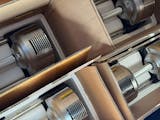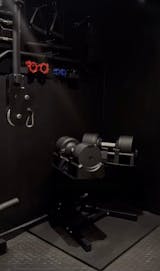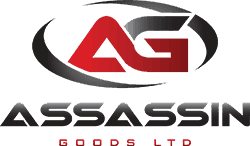Intro
In this snippet we will discuss workouts based around a single dumbbell, these can be really valuable both for home use and gym use.
What?
This week's workout is a twist on a well known workout called DT.
DT is one of crossfit hero workouts, these are named after American heroes and are well known for their difficulty. DT is named in honour of USAF SSgt Timothy P. Davis, 28, who was killed on February, 20 2009 supporting operations in OEF when his vehicle was struck by an IED.
The original DT workout is performed with a barbell but today we will switch it to use a dumbbell, one arm at a time.
Dumbbell DT
5 Rounds for time (each side)
12 DB Deadlifts
9 DB Hang Power Cleans
6 Shoulder To Overhead
(22.5kg/15kg)
Why?
We will break the why down into 3 sections, Home user, Open Gym User and Gym Owner/Coach as each will have unique reasons why it can be very beneficial
Home User
As a home user there are a number of ideals, these usually base around convenience, ease and space/equipment requirement. The advantages of being able to do single dumbbell workouts as a home gym user is it requires a super minimal amount of space, you can cheaply and easily upgrade as you get stronger and once you get a few movements in your arsenal, it is simple to program a HIIT workout for yourself.
Open Gym User
As a gym user, you will likely have access to a large amount of equipment and space for open gym (open gym refers to any time where you are training without a coached class), but you may not have time or knowledge to set up a full workout routine or plan, or you may just have some time before/after a class. In this scenario the advantages are similar to the home user as single dumbbell workouts can be simple and easy to program once you know some movements, just grab a dumbbell and string some movements together.
Gym Owner/Coach
As a coach or a gym owner a simple single dumbbell workout can provide a great bit of variety for class members but also for the busier times or special occasions single dumbbell workouts can provide a great way to maximise the number of clients in the available space and can remove the issue of equipment limitations as most gyms have an excess of dumbbells compared to other items.
Now let's get some tips and helpers for this workout and how to approach it, see if we can get the best performance and stimulus out of it for you.
Think about the movements you have to do and how they are going to stress your body. Are you using the same muscles for each movement or different muscles? Also, are you able to do all the reps unbroken (without resting)? Based on how you feel on these you could potentially look at where you are going to rest, or where you are going to work harder or push yourself.
Dumbbell DT
5 Rounds for time (each side)
12 DB Deadlifts
9 DB Hang Power Cleans
6 Shoulder To Overhead
(22.5kg/15kg)
First thing to note would be the 5 rounds for time, this shows it is a RFT workout (we know all about these from the previous blog post), from this we need to determine breakpoints based on fatigue or just a logical place to rest which we will come to in stress and pacing sections.
If we look in depth at the movements we can see that if you were to try and continuously do this workout the muscles that are likely to fatigue the fastest will be your forearms and therefore your grip strength, this is because of the accumulation of time that you are holding the dumbbell.
Now that you have assessed and looked at the full workout and the main stress you can evaluate your rest points.
Start with logical breakpoints, rather than stopping at the end of the movement reps, eg after 12 deadlifts, it is logical in this workout to stop after 11, this is because you know that you will have to perform 1 deadlift before you can start the hang power cleans so stop at 11, rest and then you will complete the 12th rep before starting the hang power cleans. The same works for between the hang power cleans and the shoulder to overhead, you can complete 1 hang power clean before starting to do the shoulder to overheads.
Now you know where the best break points are, you need to decide how often you are going to break, this will depend mostly on grip fatigue and then the next limiting factor is likely to be shoulder fatigue. Based on this, a very useful breakpoint will be 8 reps into the hang power cleans, then you can pick the dumbbell up, clean it and do all of your shoulder to over head without stopping. This will help you keep the flow and minimise rest. The other natural break point would be on the deadlifts, as the movement starts on the floor, stopping on this movement does not cause much disruption or extra work.
Good luck and let us know how you get on!



